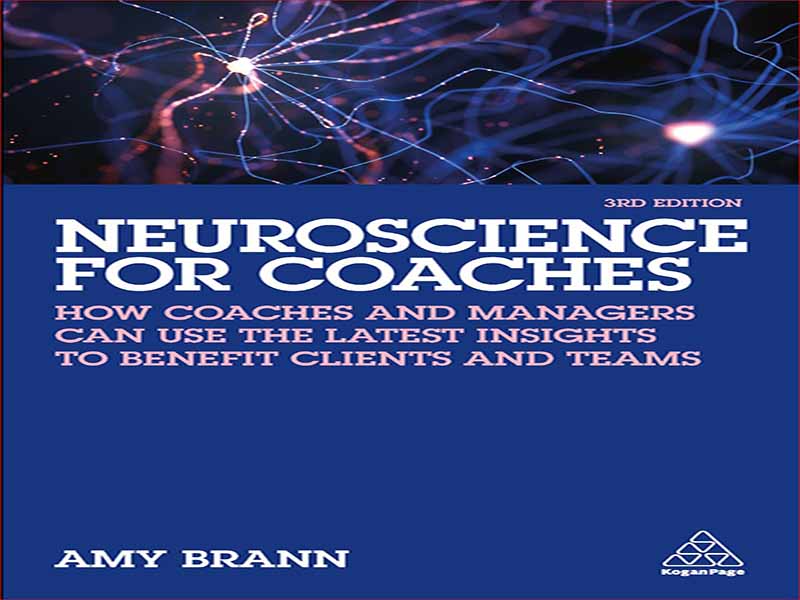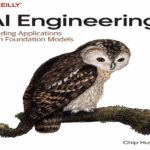- عنوان کتاب: Neuroscience for Coaches / How coaches and managers can use the latest insights to benefit clients and teams
- نویسنده: Amy Brann
- سال انتشار: 2022
- حوزه: علوم اعصاب
- تعداد صفحه: 329
- زبان اصلی: انگلیسی
- نوع فایل: pdf
- حجم فایل: 16.62 مگابایت
علوم اعصاب مطالعه علمی سیستم عصبی است. این رشته و تحقیقات آن گسترده است و موارد زیادی را شامل می شود، از جمله رشد مغز، آناتومی آن و نحوه عملکرد آن. به این می پردازد که وقتی همه چیز اشتباه می شود چه اتفاقی می افتد، اعم از عصبی، روانپزشکی یا رشد عصبی. این یک زمینه بزرگ است، و هنگام قرار دادن چنین زیربنای تغییر دهنده بازی برای مربیگری، ارزش آن را دارد که قبل از تمرکز بر روی بخش های مرتبط با ما، یک مرور کلی داشته باشیم. امروزه عصب شناسی ماهیتی بین رشته ای دارد و با رشته هایی مانند ریاضیات، زبان شناسی، مهندسی، علوم کامپیوتر، شیمی، فلسفه، فیزیک، روانشناسی و پزشکی ارتباط دارد. چندین مورد از این مناطق کمتر مورد توجه یک مربی هستند. در اینجا برخی از مناطقی است که ممکن است درباره آنها بشنوید یا بخوانید. عصب شناسی عاطفی بر چگونگی رفتار نورون ها در رابطه با احساسات متمرکز است. علوم اعصاب رفتاری مطالعه مبانی بیولوژیکی رفتار است، بنابراین به چگونگی تأثیر مغز بر رفتار می پردازد. عصب شناسی بالینی معمولاً برای ما به عنوان مربی جالب توجه نیست زیرا بر اختلالات تمرکز دارد. با این حال، بسیاری از اکتشافات جالب از این زمینه آمده است. علوم اعصاب شناختی برای عملکردهای شناختی بالاتر به پایگاه عصبی نگاه می کند. علوم اعصاب فرهنگی به مطالعه این میپردازد که چگونه باورها، ارزشها و عملکردهای ما توسط مغز، ذهنها و ژنها شکل میگیرند و آنها را شکل میدهند – زمینهای جذاب که امیدواریم در سالهای آینده به درک ما اضافه کند. علم اعصاب مولکولی به تک تک مولکول های درون سیستم عصبی نگاه می کند. تصویربرداری عصبی زمینهای است که در اسکنرهای مختلفی که در سراسر جهان استفاده میشوند خبره است. علوم اعصاب اجتماعی سیستم های بیولوژیکی را وارد حوزه فرآیندها و رفتارهای اجتماعی می کند. هر دو رشته به اصلاح و اطلاع رسانی به دیگری کمک می کنند.
Neuroscience is the scientific study of the nervous system. This discipline and its research are extensive and cover a lot, including the development of the brain, its anatomy and how it works. It looks at what happens when things go wrong, be it neurological, psychiatric or neurodevelopmental. It is a big field, and when positioning such a game-changing underpinning to coaching it is worth having a broad overview before focusing in on the parts most relevant to us. Today neuroscience has an interdisciplinary nature and liaises with disciplines such as mathematics, linguistics, engineering, computer science, chemistry, philosophy, physics, psychology and medicine. Several of these areas are of less interest to a coach. Here are some of the areas you may hear or read about. Affective neuroscience is focused on how neurons behave in relation to emotions. Behavioural neuroscience is the study of the biological bases of behaviour, so it looks at how the brain affects behaviour. Clinical neuroscience is not usually of much interest to us as coaches because it focuses on disorders; however, a lot of interesting discoveries have come from this field. Cognitive neuroscience looks at the neural base for higher cognitive functions. Cultural neuroscience studies how our beliefs, values and practices are shaped by and shape the brain, minds and genes – a fascinating field that we hope will add lots to our understanding over the coming years. Molecular neuroscience looks at the individual molecules within the nervous system. Neuroimaging is the field that is expert in the various scanners that are used across the board. Social neuroscience brings the biological systems into the realm of social processes and behaviours. Both disciplines help refine and inform the other.
این کتاب را میتوانید از لینک زیر بصورت رایگان دانلود کنید:
Download: Neuroscience for Coaches




































نظرات کاربران